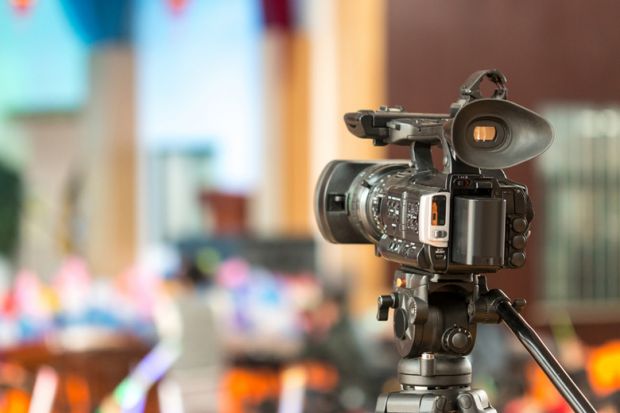Lecture capture has attracted a good deal of hostility recently. One article in Times Higher Education reported reservations from academics about the effect that recording lectures for online viewing could have on student participation and attendance (“University of Huddersfield gives tutorial filming plan green light”, News, 5 July). Another article aired worries that editing recorded lectures might eat into academics’ time, and that they may be used by management to assess performance, or by students to expose staff to ridicule (“Disability cuts lead to universal lecture capture policy”, 28 July).
My own experience has led me to a very different view. Early this year, after more students enrolled on my ethics and society course than our school’s largest lecture theatre could hold, arrangements were made to live-stream the lectures into an overflow room. Because the capture system also recorded the lectures, we decided to post them on the course’s online learning platform and see what happened.
The results were very positive. The capture system, which prevented downloading or posting elsewhere, provided a high-quality audio and visual recording and allowed viewers to vary the playback speed, to rewind or fast-forward, and to go straight to individual segments by clicking on the slide images and headings associated with them. This meant that, rather than having to take notes, the students actually looked at me during the live lecture, absorbing at least some of what I was saying. This made the lecturing experience much more engaging.
In an online course survey, 48 per cent of respondents said that the recordings greatly enhanced their learning, with 94 per cent acknowledging some positive impact. The benefits continued during the six-week revision period, with students able to watch lectures that they had missed. The detailed usage statistics gathered by the system revealed that, on average, each student viewed the library of 31 lectures 14 times, for a total duration of five hours. Lectures were watched for an average of 22 minutes, indicating selective use rather than passive reception. The subsequent exam scripts revealed few weak performers.
The impact of lecture capture on attendance was unclear. In the survey, 6 per cent of respondents said that it made them more likely to turn up, while 26 per cent said that they were less likely to attend. However, some students inevitably had timetables requiring significant travel between consecutive lectures. Most of these were not captured online, so, faced with a choice, the students sensibly chose to catch up with mine later and to attend the other. In any case, as a teacher, I see it as my primary role to promote learning rather than to maximise the weekly contact between student bodies and lecture theatre seats.
It is essential to the success of online capture that it does not require any additional set-up. Like most academics, between entering the lecture theatre and beginning to speak I have about eight minutes to adjust the lighting, ventilation and heating, log on to a workstation, activate a projector screen, open a presentation, clean a whiteboard, move a lectern, clip on a microphone, distribute handouts, answer queries and collect my thoughts. So our technology support officer programmed the system to record automatically during the lecture slot. This meant that I needed to spend some time trimming the beginning and end of each recording so that it started and finished at the correct points. But it was not a particularly burdensome process.
As for performance management, I for one would be content for the recordings to be used as part of a formal assessment of my teaching. In appraisals of teaching quality, student feedback is frequently the most accessible data, but research has shown it to be skewed by gender and age biases, with younger men such as me typically gaining higher ratings. Sources such as recorded lectures need to be available to reviewers with demonstrable teaching competence and understanding of pedagogical research, such as holders of senior Higher Education Academy fellowships.
Online lecture capture provides a major opportunity to enhance learning. It is no surprise that most students’ unions support it, and my experience suggests that academics should, too.
David Grumett is Chancellor’s fellow in the School of Divinity at the University of Edinburgh.
后记
Print headline: Piece to camera




